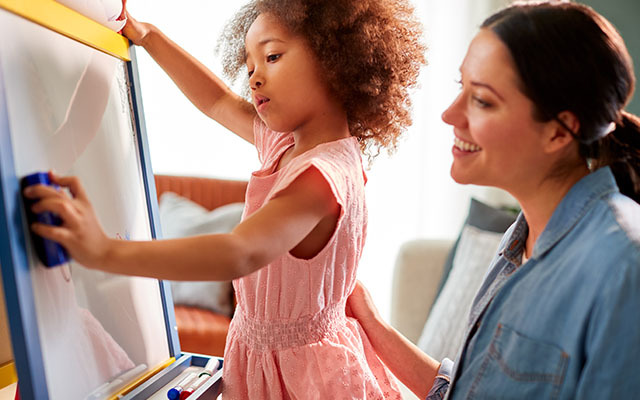Design Thinking for Family Preparedness by Angi English
Design Thinking is a simple human-centered, collaborative, and optimistic process that involves the whole family in getting ready for any hard problem, including family preparedness.
A good family preparedness plan works best when everyone in the family feels like they have ownership of the plan and they have helped create it.
Design thinking uses a creative (lateral thinking) approach which is a flexible and innovative approach to solving problems that may not lend themselves to a step-by-step process.
The design process is what puts design thinking into action. It is a structured approach to generating and evolving ideas from the whole family.
Design thinking is a fun and inclusive way to gather ideas from the whole family, fostering buy-in from everyone to make it successful. The process has five nonlinear (you can go back and forth) phases; empathy, problem identification, ideate, prototype and test/implement.
What do you need?
You’ll need some butcher paper or white board; post-it notes and markers. To make it even more personal, let kids choose a color of post-it note that is only for their comments.
First, define the problem or issue. Is it a family evacuation plan or shelter-in-place or some other challenge during an emergency or some other problem? Once you’ve defined the problem, then you want to ideate.
During the ideation (brainstorming) part, pose a question and write it on the paper or white board.
The whole family takes two minutes (or longer for younger children) without talking for everyone to think of ideas to solve or address the issue and write those on the post-it notes. After the time is up, have everyone post their notes on the paper or white board under the question. Look for patterns or themes and include discussion for any outliers (post-it notes that don’t fit into a theme). Sometimes children have the best ideas on how to solve a problem that adults may not have thought of or imagined.
Keep the problem statement simple and for younger children, try to phrase it in age-appropriate language. If younger children can’t write, have them draw a picture of their idea. The reason you do this without talking is that everyone has equal say.
Discuss the general themes and seek agreement together on which ones to keep and incorporate into your preparedness plan. Keep doing the iteration (brainstorming) without talking for each question you have for your family preparedness plan.
Then, incorporate your outcomes into a draft family plan. This is your family prototype (draft) plan, and it is fun to “pretend” that a real disaster has happened, and you get to try it out. Test out your pretend disaster. This can be fun!
Keep what works and reiterate what doesn’t until you and everyone in the family agrees that you have a plan that is customized to your needs and has incorporated all the ideas from all the family members.
If you want to become even more sophisticated, you can parallel the phases of emergency management and create a family plan that involves prevention, mitigation (stopping a disaster before it happens), response and recovery.
Those steps could be recrafted into “How Might We” questions. How might we questions are generative, inclusive, and hopeful.
As an example, let’s use a house fire disaster.
How Might We prevent a house fire? What can we do now inside and outside of our house to make it more fire resistant?
How Might We respond to a house fire if it happens? If a fire happens, how do each of us respond?
How Might We recovery from a house fire if it happens? If we have a house fire, foster resilient outcomes by preparing for recovery, especially with children.
Thinking of these issues ahead of time not only helps the whole family feel prepared but can reduce the fear of children of the unknown because they know ahead of time what to expect.
The design thinking process can also be used in other family preparedness issues like going on a trip, preparing for a new baby or pet, going back to school or a planned surgery of a family member.
The key feature of design thinking is inclusion of everyone in the family. The plan fosters empathy for each other because it is a process that involves sharing feelings of the whole family and helps share the perspectives of each member, no matter the age.
A family design thinking plan also fosters optimism. The process gives the family confidence that new and better things are possible and that you can make them happen.
Once you’ve gone through the design thinking process, prototyped and tested your plan, then put it on paper and gather all the supplies identified during your design thinking process. Post the plan where everyone can see it and review it from time to time.
Design thinking for family preparedness is a powerful and inclusive way to ward off the fear of the unknown and foster confidence and resiliency of children in their ability to handle tough challenges or other life events that require forethought. ❦
 About the Author
About the Author
Angi English has an impressive career as a strategic thought leader, leading strategic initiatives in homeland security and emergency management including various risk management projects for and with state and federal task forces. In 2010, appointed by Secretary Janet Napolitano, English worked with 35 other task force members representing local, State, Tribal and Territorial governments to collaboratively take stock of national preparedness and provide recommendations to Congress. The task force worked collaboratively with all stakeholders over a full year to produce a report for Congress, “Perspectives on Preparedness: Taking Stock Since 9/11.” Additionally, English provided advisory services in the development of the Presidential Policy Directive 8, the directive aimed at strengthening the security and resilience of the United States through systematic preparation for the threats that pose the greatest risk to the security of the Nation, including acts of terrorism, cyber-attacks, pandemics, and catastrophic natural disasters. Additionally, the taskforce facilitated the overhaul of the Threat and Hazard Identification Risk Assessment (THIRA) and the National Disaster Response Framework.
In her 30 years working in homeland security, emergency management, mental health, risk management and disability advocacy communities, she is a recognized award-winning leader. In 2012, she graduated from the Executive Leadership Program at the Naval Postgraduate School and in 2014, graduated “With Distinction,” with a Master’s Degree in Security Studies from the Naval Postgraduate School. She was named the Naval Postgraduate School Center for Homeland Defense and Security Curtis H. Butch Straub Achievement Award winner for exemplary leadership and vision. In addition to this honor, she became a Founding Scholar for Innovation at the 18-month think tank called HSx, “Advanced Thinking in Homeland Security” through the Naval Postgraduate School where she created an award-winning grand challenge project, “One Health Alert System: Complexity Oriented Model for Rapid Detection for Disease Outbreaks.” Less than one percent of graduates were invited to HSx, participants were chosen based on their proven efforts to lead and thrive in an environment that is unknown, complex, chaotic, and evolving exponentially. English also has a Master’s Degree from Baylor University in Educational Psychology.
She is a featured writer for Homeland Security: A Platform by the Center for Homeland Defense and Security For Radical Homeland Security Experimentation with over 30 publications, many focused on navigating “sensemaking in conditions of uncertainty,” and a featured authored in the Wiley Publishers text “Foundations of Homeland Security: Law and Policy, 2nd Edition” with a chapter on “Metacognition and Errors in Judgment Related to Decision-Making in Homeland Security.” The chapter explores how the brain and its subsequent thinking processes are influenced by the organic mechanisms of the brain, the social dynamics of groups, and the social construction of reality by people in general.
When she’s not solving tough problems, she is out flying her drones as a FAA Certified Part 107 Drone Pilot behind the lens of her camera, photographing landscapes in remote areas of the world. Combining her interests for drones and public safety, she was an instrumental advisor in the creation of New Mexico’s Fusion Center’s drone program, a half-million-dollar effort.
